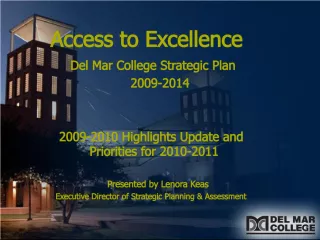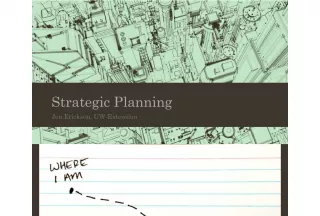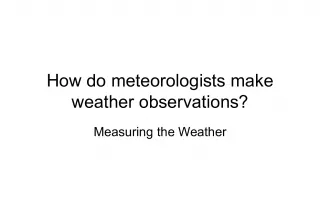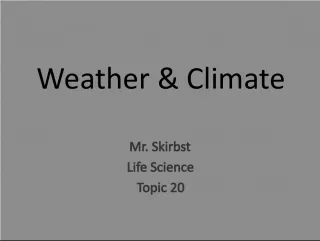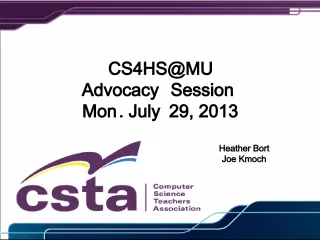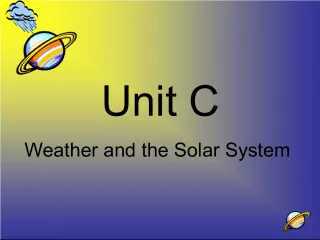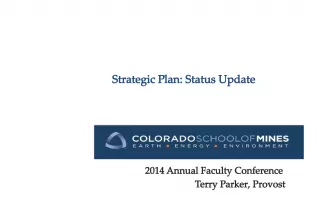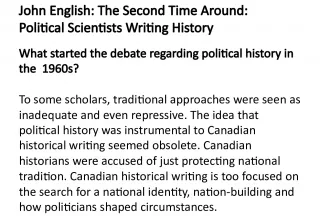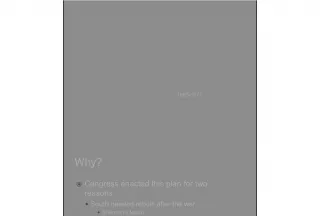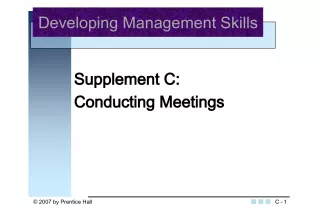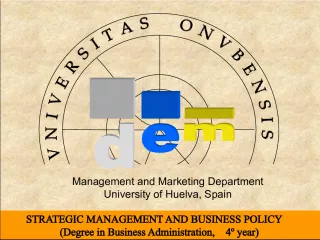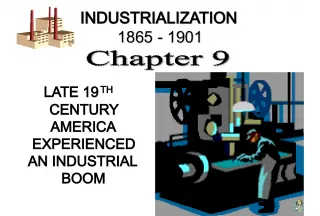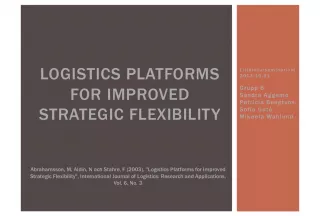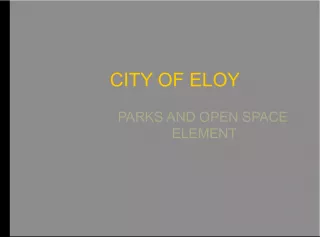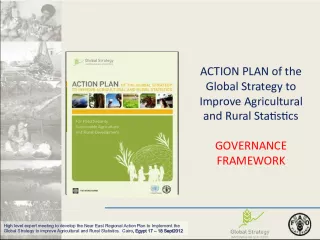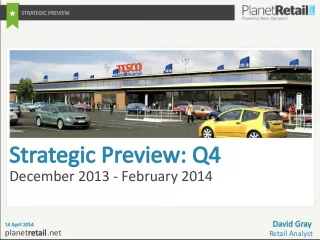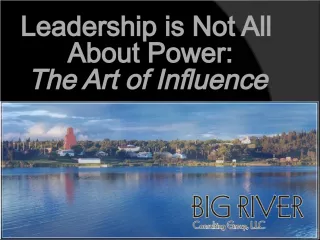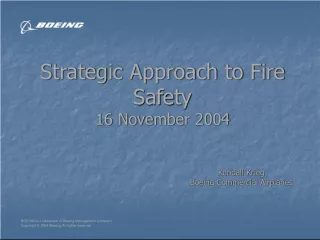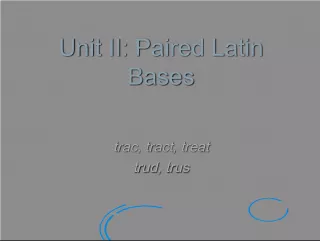Building a Weather Ready Nation: NWS Strategic Plan
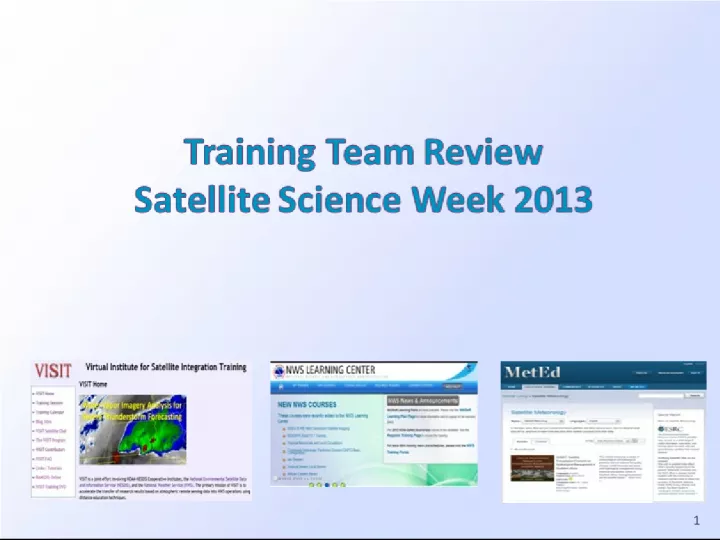

The NWS developed a strategic plan, Building a Weather Ready Nation, with 6 goals for providing improved weather, water, and climate services, supporting economic productivity, healthy communities and ecosystems, and a skilled workforce. The plan must be implemented through 2020 and beyond. The NOAT Weather Ready Nation (WRN) initiative also promotes community resilience in the face of extreme weather events.
- Uploaded on | 3 Views
-
 akshitasullad
akshitasullad
About Building a Weather Ready Nation: NWS Strategic Plan
PowerPoint presentation about 'Building a Weather Ready Nation: NWS Strategic Plan'. This presentation describes the topic on The NWS developed a strategic plan, Building a Weather Ready Nation, with 6 goals for providing improved weather, water, and climate services, supporting economic productivity, healthy communities and ecosystems, and a skilled workforce. The plan must be implemented through 2020 and beyond. The NOAT Weather Ready Nation (WRN) initiative also promotes community resilience in the face of extreme weather events.. The key topics included in this slideshow are . Download this presentation absolutely free.
Presentation Transcript
1. 1
2. The NWS published the Strategic Plan: Building a Weather-Ready Nation in 2011. The agency must implement this plan through 2020 (and likely beyond). The plan was built on 6 goals: Goal 1: Improve weather decision services for events that threaten lives and livelihood Goal 2: Deliver a broad suite of improved water forecasting services to support management of the Nations water supply Goal 3: Enhance climate services to help communities, businesses, and governments understand and adapt to climate-related risks Goal 4: Improve sector-relevant information in support of economic productivity Goal 5: Enable integrated environmental forecast services supporting healthy communities and Ecosystems Goal 6: Sustain a highly skilled, professional workforce equipped with the training, tools, and infrastructure to meet our mission 2 NOAT Weather-Ready Nation (WRN) NOAT Weather-Ready Nation (WRN)
3. NOAT NOAT WRN - Science and Technology Concepts WRN - Science and Technology Concepts The SSD Chief (NOAT) Science Vision (Key Themes) come from the Science and Technology (S&T) CAPSTONE document. Tied to Underlying S&T Concepts in WRN Roadmap: Best State of the Atmosphere (comprehensive situational knowledge) Forecaster Decision Support Environment (FDSE) Next-generation forecast system Reliable forecast confidence and uncertainty Agile, scalable, cost-effective data processing, management and dissemination Research to Operations (R2O) and Operations to Research (O2R) (Risk Reduction, testbeds, and dynamic training as a core function)
4. Satellite Proving Ground Users & Developers NASA/SPoRT, DOD, VISIT (CIRA/CIMSS) UCAR/COMET WMO, EUMETSAT, Canada, Training Division + SOOs & DOHs 4 4
5. NOAT NOAT WRN - Science and Technology Concepts WRN - Science and Technology Concepts Impacts and Issues: Impacts and Issues: Initial zero hour of the forecast database and data assimilation Initial conditions to next generation modeling systems Forecaster assist in monitoring /QCing the forecast database Forecaster situational awareness Verification Better boundary layer depiction, especially low level distribution of moisture Enable concept of Warn on Forecast Improved QPE/QPF Development of general convection anticipated Improved boundary layer forecasts of cloud, fog and visibility Improved architecture for IDSS Input into advanced DS systems (Avn NextGen, fire wx, environmental/ecosystems) How do you fit? Smoke and dust Moisture/clouds Derived winds Fire hot spots QPE SST TPW Snow/ice cover Sea ice Volcanic ash Low clouds/fog Visibility CI Overshooting Tops Enhanced V Lightning Jump Stability Indices Hurricane Intensity Moisture profile Nearcast, etc
6. Plans for Fog/LS and Lightning in support of Testbeds, PGs & prepare for AWIPSII VISIT Chat Monthly Interactive Sessions Synthetic Imagery Applications from NSSL WRF Completions tracked on NWS LearnCenter in CLC 6 The primary mission of VISIT is to accelerate transfer of research results based on atmospheric remote sensing data into NWS operations using distance education.
7. Lessons Learned (FLS) Product naming/branding is very important SME involvement in the training process is very, very important (trainer must understand the material well enough to explain it to a non-expert in a very clear manner) Operational needs differ from region to region. Thus, the training material should contain region specific examples. It is important to keep training examples current Forecasters and researchers are not that different! Reliable and efficient product generation and distribution can occur outside of NESDIS operations
8. An Operational Example An Operational Example : Blended TPW Multisensor (GPS, AMSU-SSMI) product well used by forecasters because it dealt with a significant issue: moisture distribution Why we need this? Atmospheric Rivers Heavy rain/snow Flood/Blizzard Drought Convective Storms Reminder: Training on TPW from NWS, VISIT and COMET NOAT NOAT WRN - Science and Technology Concepts WRN - Science and Technology Concepts
9. Suomi NPP: A New Generation of Environmental Monitoring Sat., pub. May 2012 Imaging with VIIRS, 2 nd Edition, pub. April 2012 GOES-R ABI: Satellite Imaging for the Next Generation, Pub. Feb. 2013 Advances in Nighttime Satellite Observation, (DNB), Pub. April 2013 How Satellite Data Inform NWP, Anticipated Pub.Q1 FY14 GOES-R GLM module, in FY14 COSMIC-2 and PCW Modules, hopefully starting soon http://meted.ucar.edu/topics/modules/satellite http://meted.ucar.edu/topics/modules/satellite Really NEW & Coming Soon Really NEW & Coming Soon 9 in Spanish too!
10. transitioning unique data and research technologies to operations 2 nd NOAA Satellite Science Week March 18-22, 2013 NWS/OST will coordinate with members and determine next steps VLab Training materials will be available Presentations Assignments Solutions Recordings AWIPS II forum planned Software checklist Project tracking Biweekly telecons will continue Training Project planning Code-sprint possible as next workshop (Fall 2013) Whats next for the EPDT?
11. Presentation Summary CIMSS is actively embracing AWIPS II to further demonstrate the impact of GOES-R and JPSS imagery on operational meteorology. AWIPS II offers several advantages over AWIPS I. The satellite and RGB-compositing capabilities of the software are increasing but need to be refined. There is still a lot of work to be done. Adequate training and testing platforms are a necessity but availability is very low. We must begin to consider the data delivery strategy to maximize utility of imagery and products on the first day of operations. Questions? Comments? 11
12. Include Training in NOAT, SDEB & PG meetings Ensure Focused on Top Priorities at Training Division, VISIT, COMET, SPoRT, Satellite Liaisons, Training is structured process with, learning objectives based on performance needs and case studies & simulations where learning is applied. 12
13. Reduced NWS Training Funds (-50% drop over 2 years) Other Key Topics: Space Weather, High Latitude, Ocean, Climate, Decision Support/Makers, Weather Ready, Aviation, Lessons Learned: Virtual Meetings/Conferences Next Virtual Science Week? 13
